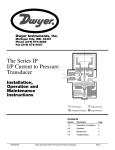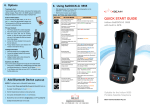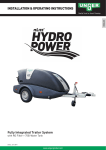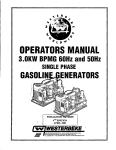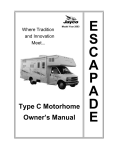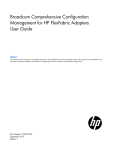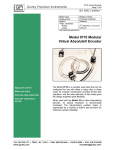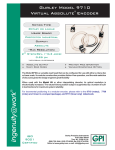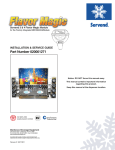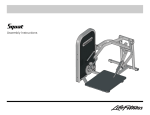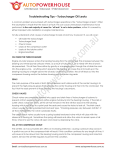Download afex fire suppression systems a: b: c
Transcript
VEHICLE FIRE PREVENTION MAINTENANCE FIRE SUPPRESSION SYSTEMS The following is a suggested daily maintenace outline which can help reduce the risk of fire on your vehicle. OPERATOR’S MANUAL 1. FOR THE AFEX 2000 SERIES PRE-ENGINEERED MULTIPURPOSE DRY CHEMICAL FIRE SUPPRESSION SYSTEM 2. 3. 4. LISTED INTRODUCTION In recent years heavy duty mobile equipment has become larger and more expensive than ever before. High repair and replacement costs coupled with production losses from downtime increase the importance of adequate fire protection. Because of the location of the operator on modern equipment, together with noise suppression and personnel guarding, a fire on board can become severe before it is even noticed. The size of the machines makes operator egress difficult and protective guarding hampers the use of hand portable fire extinguishers. As a permanent part of the vihicle, the AFEX system allows effective fire suppression in normally inaccessible areas. Operator safety is also greatly enhanced. Detection and automatic actuation allow for early system activation, alerting the operator and protecting the capital investment. This Owner’s Manual is inteded to acquaint you with AFEX Dry Chemical Fire Supperssion System. This manual is not to be considered a detailed installation guide and this manual provides no instructions for the installation, recharging, or regular inspection and maintenance of an AFEX system. A detailed installation, operation, maintenace, and service manual is available upon request from AFEX. Should you have any questions, please direct the to AFEX or an authorized AFEX products distributor. PURPOSE AND OPERATION The purpose of a fire suppression system is to suppress a fire long enough to allow access to, or the arrival of fire fighting equipment. The AFEX system is an automatic system with a manual override feature. A fire condition closes the normally open detection system and actuates the system which floods the protected areas with A:B:C: multipurpose dry chemical. (A manually actuated only system is also available.) A: B: C: 5. 6. 7. Check all oil, hydraulic fluid and gas lines for cuts abrasions or undue wear. Replace as needed. Inspect all oil, hydraulic and gas line fittings for tightness. Clean off all residue and tighten. Inspect and clean engine area. Depending upon the operation of the vehicle, use water or steam to clean it. Schedule cleaning for the end of the work shift and when heat buildup may occur after the engine is shut down. Check braking system for proper adjustment especially if brakes overheat when not engaged. Check all possible ignition points (engine block, exhaust manifolds, turbochargers, etc.). Make sure oil, hydraulic fluid and gas lines are not in contact with these ignition points. Clean vehicle of all combustible devris, dry vegetation, grain particles, coal dust, etc. Also, remove any oil and fuel drippings. Check all electrical lines and connections for tight fit, wear or abrasion. Replace any defective electrical equipment or wiring. WHAT TO EXPECT WHEN THE SYSTEM ACTUATES When the AFEX fire suppression system first actuates there will be a noise from the release of the compressed Nitrogen gas. This noise will be followed by a yellow cloud of dry chemical. Breathing in the dry chemical is not harmful but it may be unpleasant. After the system actuates stand by with a hand portable extinguisher to make sure that any smoldering debris have been extinguished and that there is no re-ignition fo the fire. Call your local fire department and move a safe distance away from the vehicle. After the fire is out use water or compressed air to clean the equipment. Do not place the vehicle back into service until it has been repaired and the cause of the fire has been determined and rectified. Finally, recharge and service the fire suppression system before returning the vehicle to service. ROUTINE MAINTENANCE AND INSPECTION The AFEX system is built to withstand adverse operating, environmental, and service conditions. However, periodic inspection will insure that the system is fully operational if its use is required. The AFEX system is to be installed, inspected, maintained and tested in accordance with NFPA 17. Daily inspections should be performed and consist of the following precedures to help reduce the risk of fire on your equipment. 1. 2. 3. 4. 5. 6. Check tubing, nozzles, remote and actuating nitrogen cylinders and other system components for loose mntg or obsttuctions. Tighten as needed. Check sensors and wiring for damage, broken wires or broken connections. Repair as needed. Check that the manual actuation rod is secured with safety pin and seal. Insure that portable extiguishers are available and fully charged. Check that any oil leaks or machine electrical problems are corrected. Remove all debris accumulation from the interior of the machine. 80-739 (1/04) Printed in U.S.A. 9-1 Section AFEX ACTIONS TO TAKE 1. TURN OFF THE VEHICLE’S MOTOR AND SET THE BRAKE if the vehicle is left running, it may (a) continue to pump fuel or hydraulic oil onto the fire, (b) all energized electrical circuits to re-ignite the fire, or (c) keep the cooling system fan running which could exhaust some of the dry chemical and thereby impede system effectiveness. 2. IF THE SYSTEM DOES NOT ACTUATE AUTOMATICALLY, MANUALLY ACTUATE THE FIRE SUPPRESSION SYSTEM BY PULLING THE SAFETY PIN FROM THE NECK OF THE FIRING MECHANIXM OR REMOTE ACTUATOR AND STRIKE DOWN HARD ON THE PUSH KNOB. At this point, quick reaction may catch a fire before it gets too large and minimize damage to the vehicle and danger to the operator. 3. MOVE TO A SAFE DISTANCE AWAY FROM THE VEHICLE AND TAKE A HAND PORTABLE EXTINGUISHER WITH YOU. By moving away from the fire, you are protected from any explosions, heat or the flames resulting from the fire. 4. CALL YOUR LOCAL FIRE DEPARTMENT AND STAND BY. It is important that someone maintain a fire watch on the vehicle with a hand portable fire extinguisher until there is no possiblity of re-ignition and to guard against secondary fires from being started by the behicle fire. 2. Heat sensors signal that a fire has started in the protected area. 3. The Firing Mechanism actuates the fire suppression system. AFTER THE FIRE IS OUT DO NOT restart the vehicle until it has been serviced and the cause of the fire has veen determined and rectified. RECHARGE and service the fire suppression system before returning the vehicle to service. 80-739 (1/04) Printed in U.S.A. 1. A fire starts in the protected area. 4. The nitrogen propels the dry chemical extinguishing agent through the destribution network. The agent is discharged through fixed nozzles into protected areas, to suppress the fire.



